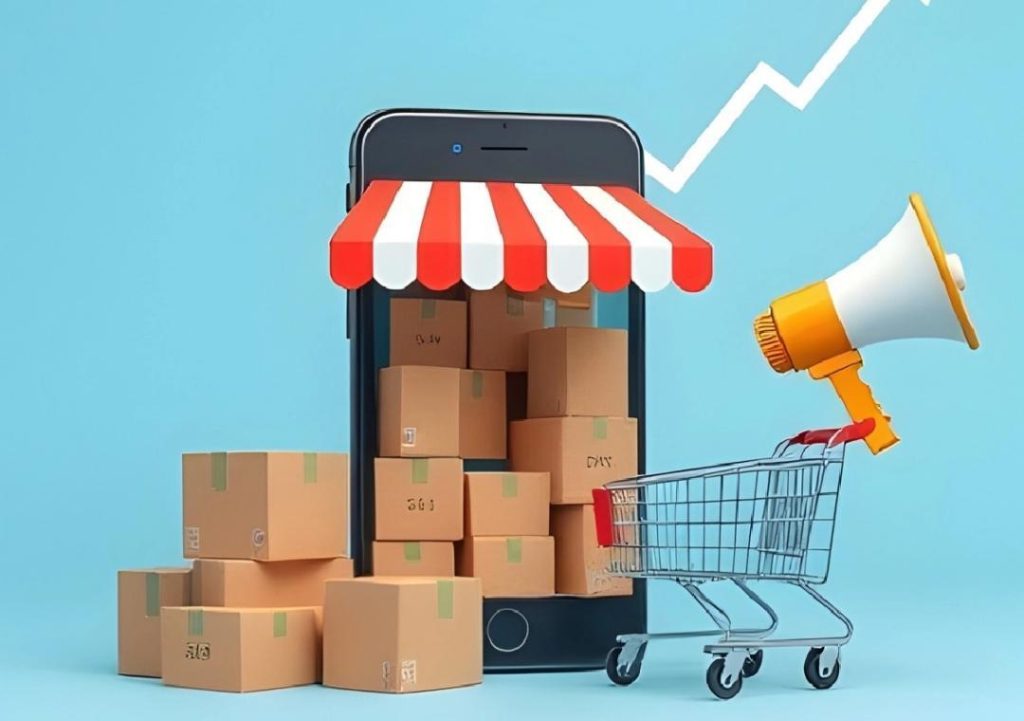
What’s Fuelling 2025’s E-commerce Surge?
The e-commerce landscape has undergone a significant transformation in recent years, with online shopping becoming an integral part of modern consumers’ daily lives. In 2025, the global e-commerce market is projected to reach a staggering $6.5 trillion, up from $3.9 trillion in 2020. So, what’s driving this unprecedented surge in e-commerce growth?
A closer examination of the current e-commerce trends reveals that several factors are contributing to this remarkable growth. In this article, we’ll delve into the key drivers behind 2025’s e-commerce surge, exploring the importance of mixed-channel experiences, AI-based personalization, and video-led product discovery.
Mixed-Channel Experiences: The New Normal
In today’s digital age, consumers expect seamless experiences across all touchpoints, from social media to email marketing, and from mobile apps to physical stores. Brands that successfully integrate multiple channels to create a cohesive customer journey are likely to reap the benefits of increased loyalty, engagement, and ultimately, sales.
One of the primary benefits of mixed-channel experiences is the ability to provide personalized interactions with customers. By combining data from various sources, such as website interactions, social media engagement, and in-store purchases, brands can create highly targeted marketing campaigns that resonate with individual customers.
For instance, a fashion brand might use social media to promote a new collection, while simultaneously offering personalized product recommendations to customers who have shown interest in similar styles. This approach not only enhances the customer experience but also increases the likelihood of conversion.
AI-Based Personalization: The Key to Unlocking Customer Loyalty
Artificial intelligence (AI) has revolutionized the e-commerce industry, enabling businesses to create highly personalized experiences that cater to individual customer preferences. AI-powered chatbots, for example, can offer real-time support, suggesting products and providing answers to frequently asked questions.
AI-based personalization is particularly effective in driving customer loyalty. By analyzing customer data and behavior, brands can identify patterns and preferences, allowing them to offer tailored recommendations and promotions that resonate with individual customers.
A study by Accenture found that 75% of consumers are more likely to become repeat customers if a brand offers personalized experiences. Furthermore, AI-powered personalization can increase conversion rates by up to 20%, making it a crucial component of any e-commerce strategy.
Video-Led Product Discovery: A Game-Changer for E-commerce
In recent years, video has emerged as a key driver of e-commerce growth, with 85% of consumers stating that they prefer watching a video to learn about a product rather than reading text. Video-led product discovery is particularly effective in the fashion, beauty, and lifestyle industries, where customers can use video to visualize products and get a better sense of fit and quality.
One of the primary benefits of video-led product discovery is the ability to showcase products in a more engaging and interactive way. For instance, a fashion brand might create a 360-degree video showcasing a new collection, allowing customers to rotate and zoom in on individual pieces.
Streamlining Checkout Touchpoints: The Key to Reducing Cart Abandonment
Despite the growth of e-commerce, cart abandonment rates remain a significant challenge for many businesses. According to Baymard Institute, the average cart abandonment rate is around 69%, with 22% of customers abandoning carts due to high shipping costs, and 15% due to a lack of trust in the payment process.
Streamlining checkout touchpoints is crucial in reducing cart abandonment rates. By simplifying the checkout process and providing clear, transparent information about shipping and payment, brands can increase the likelihood of conversion.
Automating Back-End Logistics: The Key to Efficiency and Cost Savings
As e-commerce growth continues to accelerate, the need for efficient back-end logistics has never been more pressing. Automating tasks such as inventory management, order fulfillment, and shipping can help businesses reduce costs, improve accuracy, and increase customer satisfaction.
One of the primary benefits of automating back-end logistics is the ability to reduce labor costs and improve efficiency. By leveraging AI-powered automation tools, brands can streamline tasks such as order picking and packing, freeing up staff to focus on higher-value activities such as customer service and marketing.
Building Omnichannel Loyalty Strategies: The Key to Long-Term Growth
In today’s digital age, customer loyalty is more important than ever. Brands that build omnichannel loyalty strategies are likely to reap the benefits of long-term growth, customer retention, and increased advocacy.
One of the primary benefits of building omnichannel loyalty strategies is the ability to provide seamless interactions across all touchpoints. By integrating loyalty programs across multiple channels, brands can offer rewards, discounts, and personalized offers that resonate with individual customers.
Conclusion
2025’s e-commerce surge is fueled by a combination of mixed-channel experiences, AI-based personalization, and video-led product discovery. Brands that streamline checkout touchpoints, automate back-end logistics, and build omnichannel loyalty strategies are well-positioned to capitalize on growing mobile and social commerce momentum.
As the e-commerce landscape continues to evolve, it’s essential for businesses to stay ahead of the curve by embracing the latest trends and technologies. By doing so, they can create highly personalized experiences that resonate with individual customers, drive loyalty and retention, and ultimately, fuel long-term growth.
Source:
https://www.growthjockey.com/blogs/ecommerce-trends-techniques-strategies-growth






